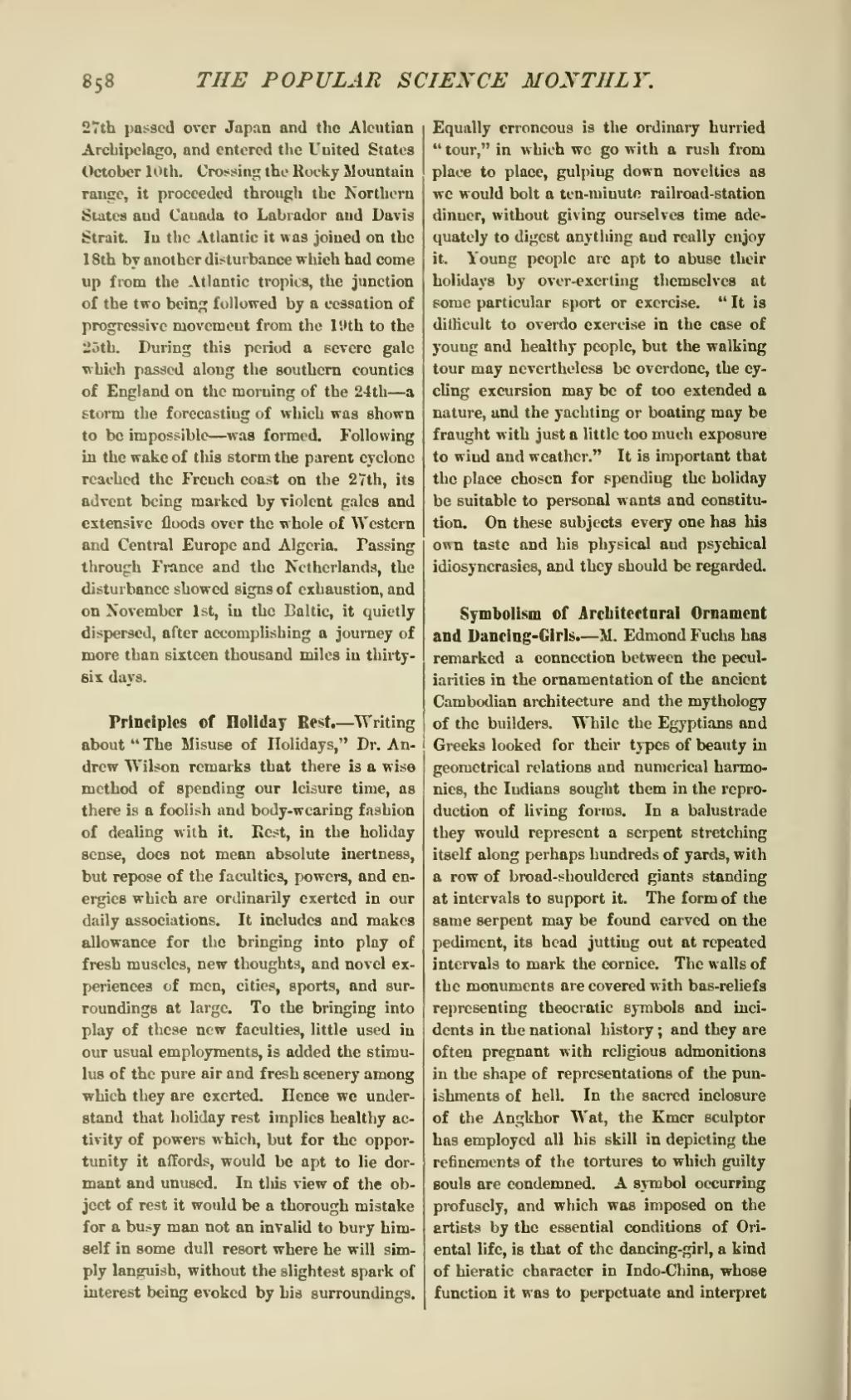27th passed over Japan and the Aleutian Archipelago, and entered the United States October 10th. Crossing the Rocky Mountain range, it proceeded through the Northern States and Canada to Labrador and Davis Strait. In the Atlantic it was joined on the 18th by another disturbance which had come up from the Atlantic tropics, the junction of the two being followed by a cessation of progressive movement from the 19th to the 25th. During this period a severe gale which passed along the southern counties of England on the morning of the 24th—a storm the forecasting of which was shown to be impossible—was formed. Following in the wake of this storm the parent cyclone reached the French coast on the 27th, its advent being marked by violent gales and extensive floods over the whole of Western and Central Europe and Algeria. Passing through France and the Netherlands, the disturbance showed signs of exhaustion, and on November 1st, in the Baltic, it quietly dispersed, after accomplishing a journey of more than sixteen thousand miles in thirty-six days.
Principles of Holiday Rest.—Writing about "The Misuse of Holidays," Dr. Andrew Wilson remarks that there is a wise method of spending our leisure time, as there is a foolish and body-wearing fashion of dealing with it. Rest, in the holiday sense, does not mean absolute inertness, but repose of the faculties, powers, and energies which are ordinarily exerted in our daily associations. It includes and makes allowance for the bringing into play of fresh muscles, new thoughts, and novel experiences of men, cities, sports, and surroundings at large. To the bringing into play of these new faculties, little used in our usual employments, is added the stimulus of the pure air and fresh scenery among which they are exerted. Hence we understand that holiday rest implies healthy activity of powers which, but for the opportunity it affords, would be apt to lie dormant and unused. In this view of the object of rest it would be a thorough mistake for a busy man not an invalid to bury himself in some dull resort where he will simply languish, without the slightest spark of interest being evoked by his surroundings. Equally erroneous is the ordinary hurried "tour," in which we go with a rush from place to place, gulping down novelties as we would bolt a ten-minute railroad-station dinner, without giving ourselves time adequately to digest anything and really enjoy it. Young people are apt to abuse their holidays by over-exerting themselves at some particular sport or exercise. "It is difficult to overdo exercise in the case of young and healthy people, but the walking tour may nevertheless be overdone, the cycling excursion may be of too extended a nature, and the yachting or boating may be fraught with just a little too much exposure to wind and weather." It is important that the place chosen for spending the holiday be suitable to personal wants and constitution. On these subjects every one has his own taste and his physical and psychical idiosyncrasies, and they should be regarded.
Symbolism of Architectural Ornament and Dancing-Girls.—M. Edmond Fuchs has remarked a connection between the peculiarities in the ornamentation of the ancient Cambodian architecture and the mythology of the builders. While the Egyptians and Greeks looked for their types of beauty in geometrical relations and numerical harmonies, the Indians sought them in the reproduction of living forms. In a balustrade they would represent a serpent stretching itself along perhaps hundreds of yards, with a row of broad-shouldered giants standing at intervals to support it. The form of the same serpent may be found carved on the pediment, its head jutting out at repeated intervals to mark the cornice. The walls of the monuments are covered with bas-reliefs representing theocratic symbols and incidents in the national history; and they are often pregnant with religious admonitions in the shape of representations of the punishments of hell. In the sacred inclosure of the Angkhor Wat, the Kmer sculptor has employed all his skill in depicting the refinements of the tortures to which guilty souls are condemned. A symbol occurring profusely, and which was imposed on the artists by the essential conditions of Oriental life, is that of the dancing-girl, a kind of hieratic character in Indo-China, whose function it was to perpetuate and interpret

